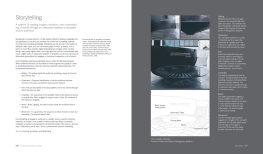Universal Principles of Design February 26, 2012
Posted by Kevin Egge in [Books] Visualization & Presentation.3 comments
There is more to exceptional design than what immediately meets the eye. Why do some products resonate with people and others don’t? In the Universal Principles of Design, the authors focus on bringing out 125 of the most intuitive and highly regarded components of great design work. The book is written and organized in an academic fashion. It is not a step-by-step design guide; rather it presents the fundamental attributes of each design component and assumes the reader has enough knowledge to put the framework into practice. The style is easy to read and concise. The most recent addition of the book was updated in 2010 and added 25 new components to the original 100.
William Lidwell, Kritina Holden, and Jill Butler are the three design masters who collaborated on the Universal Principles of Design. Their goal with the book is to communicate that design should be treated as a cross-disciplinary effort with globally accepted principles. The inevitability for designers to become increasingly specialized in their field dulls their awareness of advances in other areas of design. Rather than studying hundreds of books to learn of other design disciplines, with this book designers now have at their fingertips the succinct details of the major design components. The authors’ efforts serve as a means for checking the quality of the design process and final product and in turn increases the probability that those designs will be successful.
The 125 design components in the Universal Principles of Design are structured in two easily accessible ways. They are first listed alphabetically to serve as a reference point on specific topics as needed. In this format, the book can also be read cover-to- cover for an overview of what designers need to acknowledge in their designs. More notably, the books alternative structure groups components into functional areas of design. This allows the reader to focus on only the relevant components of design that apply to the current exploration. With the components listed under category headings, some components are listed multiple times because they apply to more than one design function. The categorical organization covers:
- How can I influence the way a design is perceived?
- How can I help people learn from a design?
- How can I enhance the usability of a design?
- How can I increase the appeal of a design?
- How can I make better design decisions?
The categorical organization structure solidly establishes the Universal Principles of Designas a repeatedly go-to book for every designer. For example, if the designer is looking for ways to increase the adoption of a particular product, he/she can quickly choose among the 33 design components identified in the “How can I increase the appeal of a design” category. The components range from the basic, Alignment (placement of elements such that edges line up along common rows) to the complex, Fibonacci Sequence (a sequence of numbers in which each number is the sum of the preceding two). To illustrate the framework of each component, the authors use a two-page spread – one page describes the varied aspect of the principles along with book references for further reading and the adjacent page contains diverse visual examples to further clarify those points. See the ‘Storytelling’ example below:
In the Introduction, the authors clearly articulate their feelings of necessity for this book by quoting famed designer and the author of The Elements of Style, William Strunk:
The best designers sometimes disregard the principles of design. When they do so, however, there is usually some compensating merit attained at the cost of the violation. Unless you are certain of doing as well, it is best to abide by the principles.

